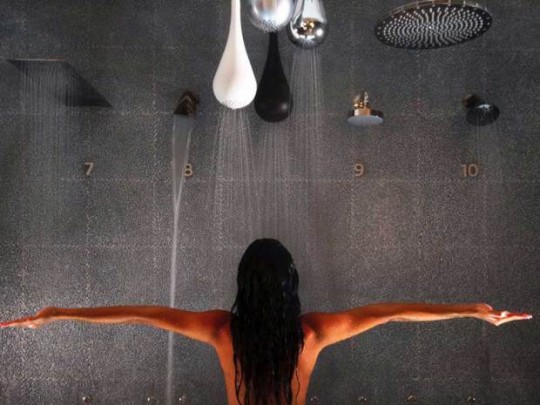The Secret Behind Retail Customer Experience Success Is Brain Science
[This is a guest article by Denise Lee Yohn.]
What happens when a retailer applies a neuroscience approach to design its customer experience? PIRCH.

PIRCH is a retailer of high-end appliances and home fixtures with eight showrooms across the U.S. CNBC, The Washington Post, and Bloomberg are among the national business media that have lauded PIRCH for its breakthrough customer experience and store design.
PIRCH has been compared to Apple and Tiffany in Forbes magazine. And its CEO, Jeffery Sears, was named one of the top disruptors in retail by the National Retail Federation.
Given such a record, I knew I had to include PIRCH in my new book, Extraordinary Experiences: What Great Retail and Restaurant Brands Do. When I set about researching the company, I thought I’d learn about some breakthrough design principles that informed the store design or an elaborate customer journey mapping exercise that had been used to develop the store experience.
What I discovered, instead, was that the extraordinary retail customer experience at PIRCH is grounded in a neuroscience approach.
The SCARF Model
When I interviewed Sears, he described how the store appealed to and engaged customers by using the SCARF model. The SCARF model was introduced in 2008 by David Rock, CEO, Results Coaching Systems International.
SCARF is an acronym for five domains of human social experience, according to Rock:
- Status is about relative importance to others.
- Certainty concerns being able to predict the future.
- Autonomy provides a sense of control over events.
- Relatedness is a sense of safety with others, of friend rather than foe.
- Fairness is a perception of fair exchanges between people.
Given the insights the SCARF model provides about collaboration and influence between people, its application to organizational systems, change management, and leadership development is clear. The framework was quickly picked up by business and management circles, and Strategy+Business magazine highlighted it as one of the “Best Ideas of 15 Years.”
But Sears and his team at PIRCH were the first I had ever heard of to apply the SCARF model to the retail customer experience. Here’s how Sears described how it works at a PIRCH store:
Meet the Barista of Joy
A “barista of joy” — the position’s official title — welcomes people at the Bliss Cafe coffee counter with its bright red La Marzocco espresso machine at the entrance of each PIRCH showroom. Customers are offered a complimentary coffee or infused water, and as Sears told me, “That immediately raises your status, and so you check that box.”
“As you’re waiting for your coffee,” Sears continued, “the barista will ask, ‘Do you have an appointment? Would you like to be toured? Or would you [want to] wander through the store?’ What’s actually happening in that interchange is certainty. So you’ve created certainty about how the store works.”
Would a 'Barista of Joy' enhance your retail customer experience? #CX Share on XIf shoppers choose to wander, they’re told about the layout of the store, shown the “Dream Rooms” used for consultations, and welcomed back to the Bliss Cafe if they need help or have questions. This meets peoples’ need for the “autonomy” in the SCARF model.
“Relatedness” and “fairness” come through interactions with sales associates — PIRCH calls them “lifestyle experience advisors” – who, instead of using the usual sales pitches, serve free samples of food prepared by chefs using PIRCH appliances.
Shower, Anyone?
The hands-on nature of most displays in the store also meets these needs. In the “Sanctuary,” filled with working shower heads, saunas, and tubs, customers can schedule a time to test the showers — PIRCH will even provide bathrobes!
In the kitchen, they can watch or participate in cooking demonstrations; the “Patio” features working outdoor ranges and grills, plush furniture, and high-definition televisions; the restrooms are outfitted with several toilets, sinks, and faucets PIRCH sells.

When each shopper’s SCARF model needs are fulfilled, it “releases dopamine in the brain and that ties back to the concept of joy,” Sears said. The customer feels joyful because, he explained, “it was a genuine, thoughtful experience.”
Retail Customer Experience: Secret to Success is Brain Science #CX pic.twitter.com/VY3Rcm6njX Share on XI found this approach fascinating and helped me understand why PIRCH stands out as a leader in customer experience.
From the neuromarketing findings reported in recent years, I’ve learned that shopping can produce spikes in reward-circuit dopamine activity in the brain. And, now, thanks to PIRCH and the SCARF model, I see how retailers can use specific neuro-triggers to design extraordinary customer experiences.
Learn about other retailers taking extraordinary actions in Denise Lee Yohn’s the new book, Extraordinary Experiences: What Great Retail and Restaurant Brands Do – available now. Blending a fresh perspective, twenty-five years of experience working with world-class brands including Sony and Frito-Lay, and a talent for inspiring audiences, Denise is a leading authority on building and positioning exceptional brands. Denise is also the author of the bestselling book What Great Brands Do: The Seven Brand-Building Principles That Separate the Best from the Rest (Jossey-Bass). Denise is one of the most popular customer experience keynote speakers.
